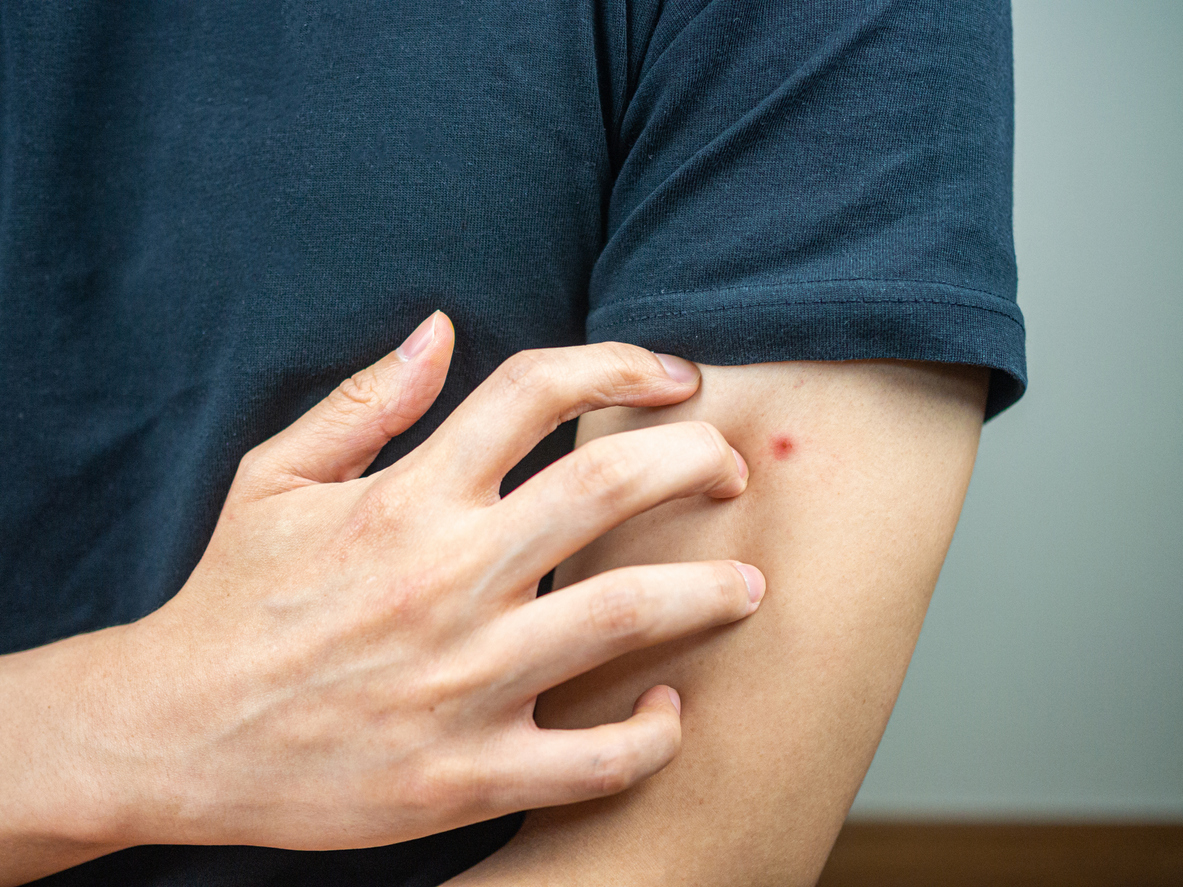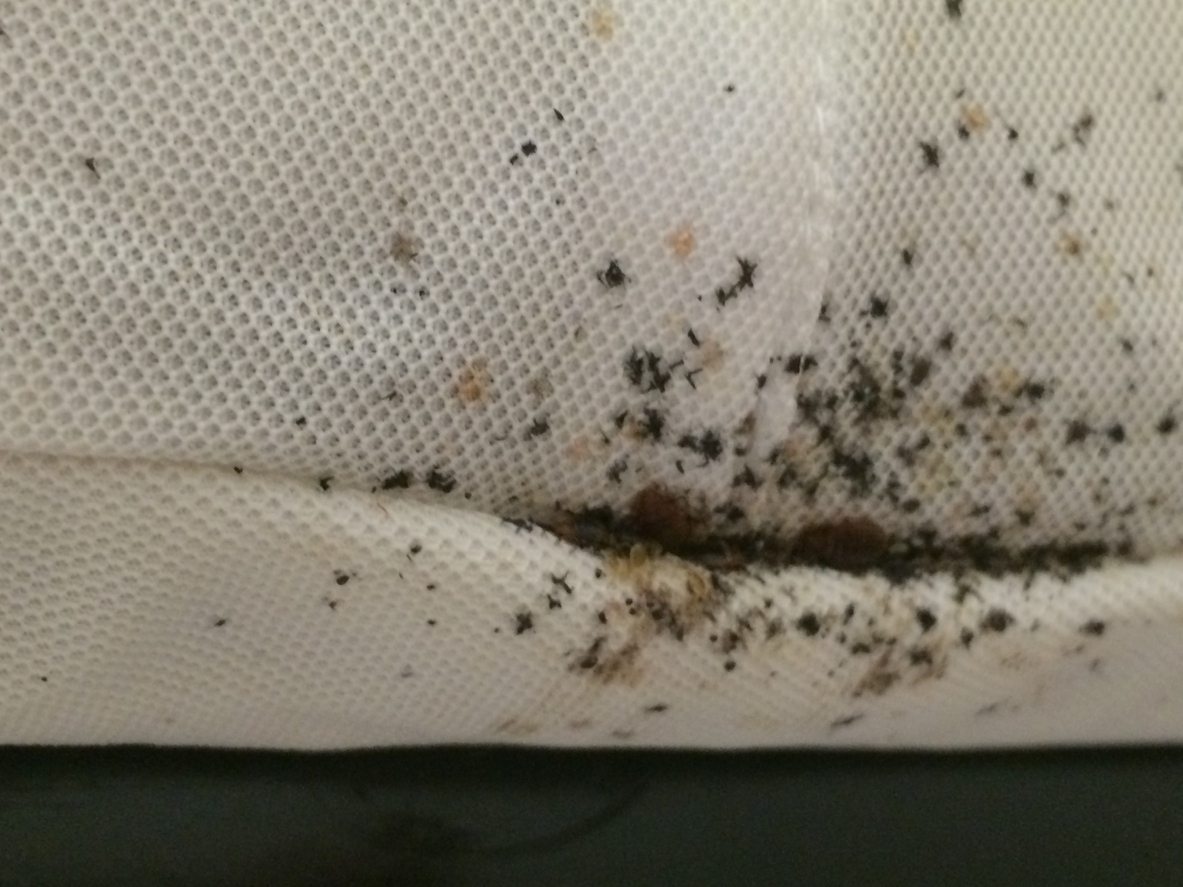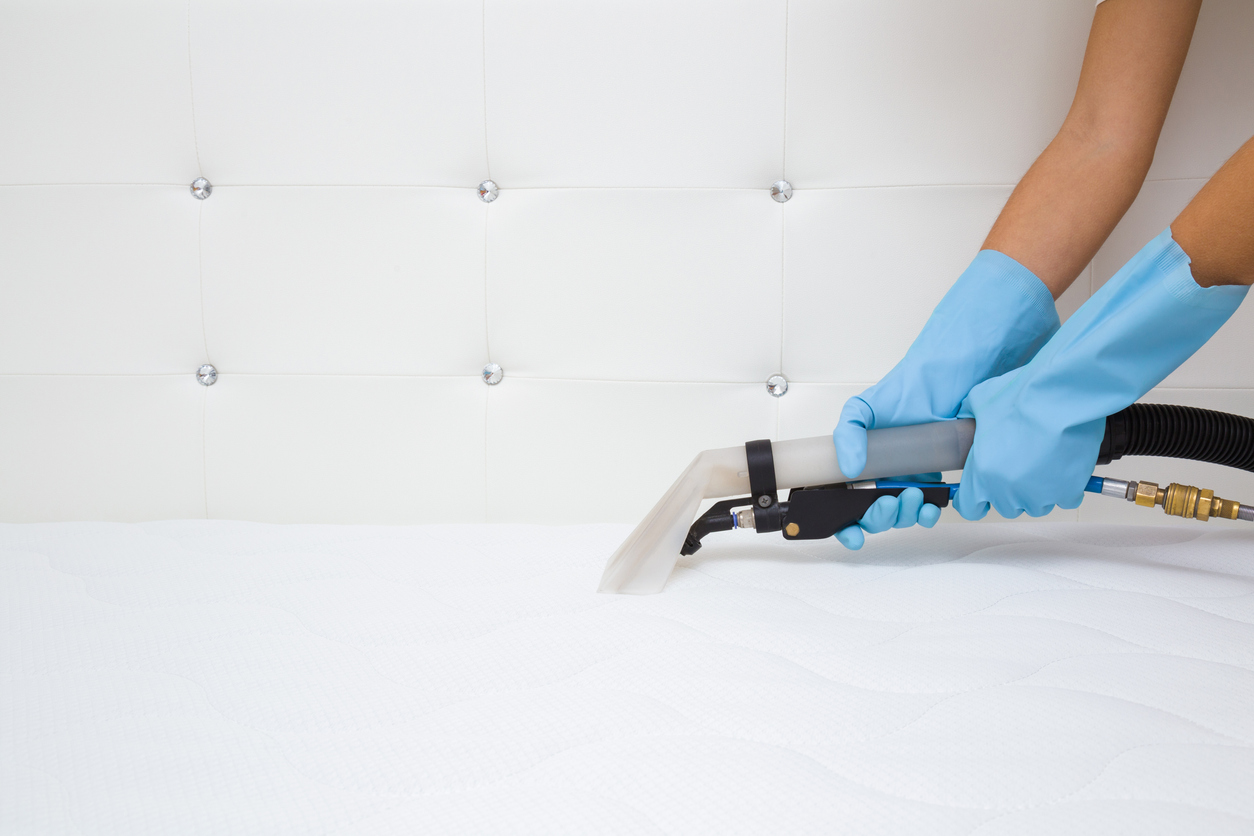

We may earn revenue from the products available on this page and participate in affiliate programs. Learn More ›
What You Need to Know
- No-see-um bites and bed bug bites have different patterns, though both cause itchy welts.
- No-see-um bites often take longer to heal than bed bug bites.
- Bed bug bites are likely to appear over a short period, whereas no-see-um bites occur more sporadically.
- No-see-um bites can be prevented with bug spray, but a pro is needed to eradicate a bed bug infestation.
Most people have, at some point, discovered mysterious bites that leave red, itchy welts on their skin. The most common culprits of these irritations are no-see-ums and bed bugs—but what’s the difference between them, and how does one determine which insect caused the bites?
It’s possible that those who recently spent time outdoors in warmer weather were bitten by a no-see-um. These tiny flies, also known as biting midges or sand flies, bite humans for protein-rich meals and are attracted to moist environments, like standing water.
Bed bugs, on the other hand, are small, flat-bodied insects the size of an apple seed (when fully grown) that feed on human blood and are experts at hiding indoors. Bed bugs are attracted to humans because they can get a guaranteed meal on a regular basis by living near people. If bite marks are accompanied by tiny bloodstains on the bed sheets, the bites likely came from bed bugs.
Though both insects are similar in size, have related feeding habits, and can be a nuisance for their victims, bed bugs and no-see-ums have many differentiating characteristics. Here’s what to know about no-see-um bites vs. bed bug bites, how to identify the types of bug bites, and when to bring in one of the best pest control services (options include companies such as Orkin or Terminix).
1. No-see-um bites are usually found in small clusters, while bed bug bites appear in zigzag or straight-line patterns.
The bites of no-see-ums resemble those of bed bugs, as the insects both aim for open areas of the skin, such as the lower legs or arms. No-see-um bites usually appear as a uniform, randomly clustered area of red dots. Although the initial bite isn’t always noticed or felt at first, it is prominent afterward, leaving a 1- to 2-inch-diameter raised welt over time. No-see-um bug bites may take hours or even days to show up before someone can begin bug bite identification.
The main difference between no-see-um bites vs. bed bug bites is that bed bugs leave a trail of bites in a straight or zigzag line on parts of the body that are exposed when sleeping, such as the neck, face, hands, shoulders, arms, or legs. However, bed bugs have a defense mechanism when biting flesh that makes it hard for their victims to feel the initial bite, so the bite might not be noticed until a few days after.

2. Both insects’ bites produce itchy, red welts on human skin.
Despite the small size of no-see-ums, they have powerful mandibles that can easily pierce the skin, causing painful bites—even more severe than a mosquito bite. No-see-um bites can also cause a sharp burning sensation, redness, swelling, and in some cases, a rash from multiple bites. It’s rare, but not impossible, to have a severe reaction to no-see-um bites.
Bed bug bites are typically small reddish bumps resembling blisters or pimples. Since bed bugs inject an anesthetic and anticoagulant into the skin, it may take a few hours—or even days—before the victim notices the insect bites. While some people don’t have any visible marks, most people who experience bed bug bites have mildly swollen, itchy bumps with a central reddish bruise, or even a bed bug rash.
No matter the culprit of the bite, the treatment is similar. A topical corticosteroid can help people relieve the itchy bug bites. They’ll also want to keep the area clean and dry to avoid infection. Those who experience an allergic reaction will want to see a doctor for treatment.
3. Bed bugs use a proboscis (a beak) to puncture skin, whereas no-see-ums use their jaws to slice the skin; this means no-see-um bites typically take longer to heal.
No-see-um bites and bed bug bites heal within 1 to 2 weeks, but both have different healing processes. No-see-um bites may take longer to heal due to the way the insect bites and stings, slicing open the skin with sharp jaws.
It’s best to address no-see-um bites with a combination of over-the-counter medications and home remedies. Victims can reduce skin irritation by washing the wound with warm water and soap, avoiding itching as much as possible, using a cold compress for pain relief, and applying an antihistamine cream to the area. Those who are experiencing a more severe reaction to the bites, such as skin rashes, trouble breathing, or difficulty swallowing, should seek professional medical treatment immediately.
In contrast, bed bugs use a thin, straw-like proboscis (or beak) to pierce the skin and suck blood, injecting an anesthetic to numb the area and an anticoagulant to prevent bleeding. Because of this, some people may be bitten during the night without noticing any signs the next day. Bed bug bites generally heal faster than no-see-um bites; it’s possible to treat a bed bug bite simply by washing the area with warm water and soap and applying a corticosteroid cream.
4. Bed bugs will usually produce more bites over a shorter time period, while no-see-um bites tend to happen less frequently.
One of the earliest signs of bed bugs is when the victim notices bites about once a week (during daytime or nighttime). However, nymphs (baby bed bugs) will bite at each stage of molting (shedding), and once developed into adults, they will need to fill up on blood every 4 to 7 days. When mating occurs, the cycle continues and bites can become more frequent throughout the week, or even in 1 night.
No-see-ums are most active during dusk and dawn, preferring to bite during these times and rarely biting during the day. These insects specifically enjoy warmer temperatures, so they only tend to come out during spring or summertime and bite near standing bodies of water. Additionally, only female no-see-ums bite, so fewer of these insects will seek out humans compared to bed bugs.

5. Bed bugs will leave dark red or black stains in your bed after biting you, whereas no-see-ums will not.
Bed bugs leave bloodstains on bedsheets and pillows due to the anticoagulant chemical they inject, which keeps the bite bleeding and results in tiny flecks of blood. The proboscis of a bed bug may also drip blood after the insect feeds, leaving marks on the bed. Additionally, bed bug fecal spots on sheets and pillows are darker in color, resembling ink splotches, and become harder to remove over time.
6. Bug spray can prevent no-see-um bites from occurring, but bed bug removal requires professional treatment.
To prevent being bitten by no-see-ums and other bugs that bite, it is essential to take certain precautions, such as applying insect repellent with DEET before going outside, wearing long sleeves, avoiding damp areas, dimming lights near the home, installing screens on windows and doors, and eliminating standing water sources. Ensure windows have intact screens, block off openings in unheated areas, and consider using air conditioning. These preventive treatments can effectively help people get rid of no-see-ums from their home. Applying one of the best bug sprays is often the best defense against biting insects.
It can be more challenging to get rid of bed bugs in a mattress or elsewhere in the home; however, to minimize the risk of a severe infestation, keep the home clutter-free and vacuum regularly to help eliminate potential hiding spots. Seeking assistance from a professional exterminator is crucial and will be the best option if an active infestation occurs. Pest control specialists are trained on specific insect species and will know exactly where to find these pests and how to remove them from the home.
7. A professional exterminator can tell the difference between no-see-um bites and bed bug bites and can make a plan to remove the pests from the home.
A professional bed bug pest control company can identify bed bug infestations through visible indicators such as bites on the skin, the presence of adult bed bugs or nymphs, fecal stains, molted skin, and a distinct sweet odor. These signs help professionals see and determine whether there are bed bugs present in a home—or if the residents are instead dealing with flea bites, tick bites, or bites from a bug that looks like a bed bug.

Although there are DIY methods to get rid of the annoying pests, carrying out the treatment without the help of a pest management professional may become time-consuming and nauseating. Reputable pest control companies will have the right tools, equipment, and knowledge to handle the job. Bed bug treatment costs are well worth it to prevent the infestation from spreading and becoming worse.
The most traditional and effective method to get rid of bed bugs is through chemical treatments using insecticides. Multiple applications might be necessary for long-lasting effects and complete removal, especially since chemical treatments alone do not kill bed bug eggs (heat treatment is a more effective method for killing both bed bugs and their eggs). Combining chemical treatments with other methods can be a comprehensive pest strategy to prevent future bed bug infestations.
